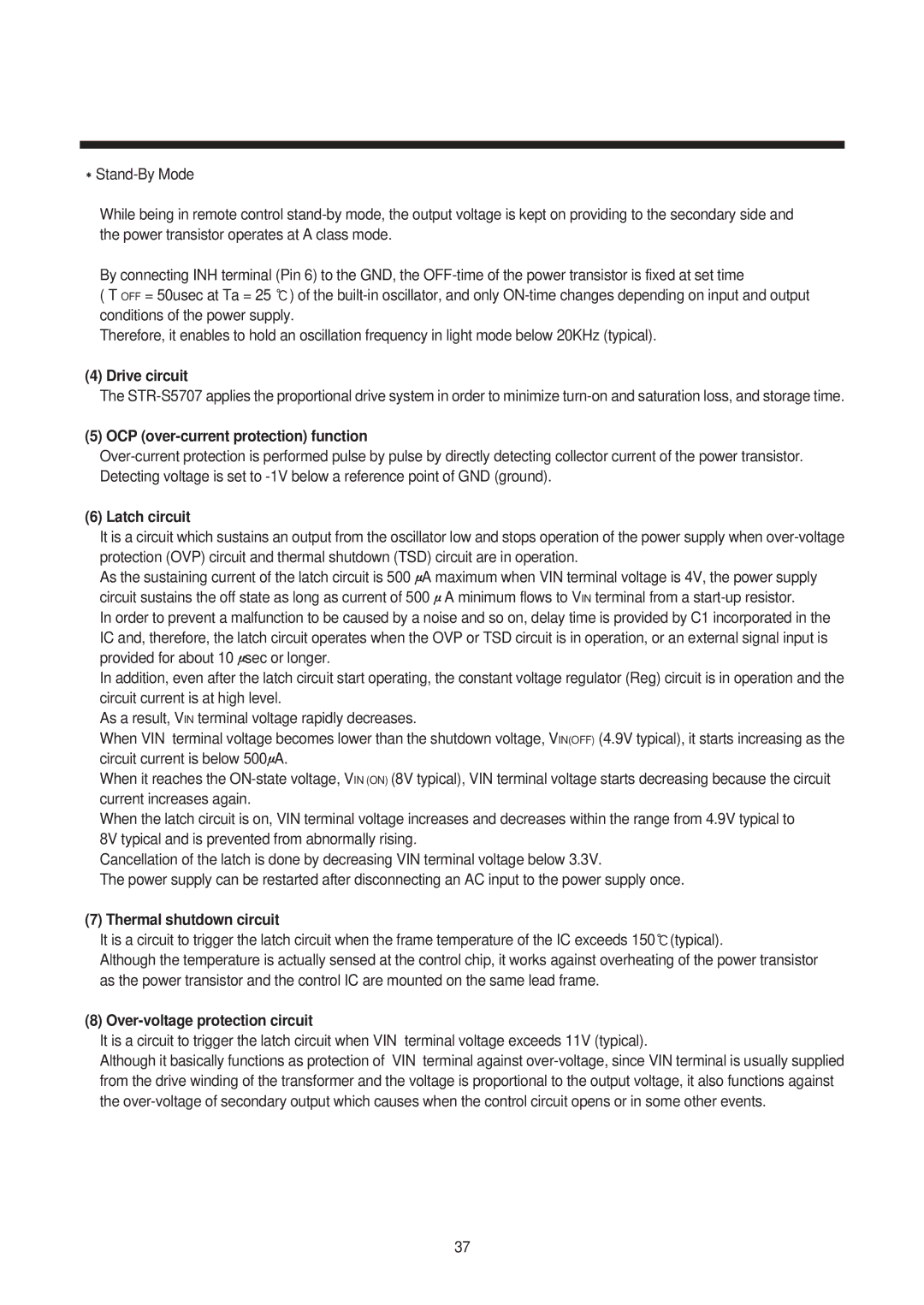
While being in remote control
By connecting INH terminal (Pin 6) to the GND, the
( T OFF = 50usec at Ta = 25 ) of the
Therefore, it enables to hold an oscillation frequency in light mode below 20KHz (typical).
(4) Drive circuit
The
(5) OCP (over-current protection) function
(6) Latch circuit
It is a circuit which sustains an output from the oscillator low and stops operation of the power supply when
As the sustaining current of the latch circuit is 500 A maximum when VIN terminal voltage is 4V, the power supply circuit sustains the off state as long as current of 500 A minimum flows to VIN terminal from a
In order to prevent a malfunction to be caused by a noise and so on, delay time is provided by C1 incorporated in the IC and, therefore, the latch circuit operates when the OVP or TSD circuit is in operation, or an external signal input is provided for about 10 sec or longer.
In addition, even after the latch circuit start operating, the constant voltage regulator (Reg) circuit is in operation and the circuit current is at high level.
As a result, VIN terminal voltage rapidly decreases.
When VIN terminal voltage becomes lower than the shutdown voltage, VIN(OFF) (4.9V typical), it starts increasing as the circuit current is below 500 A.
When it reaches the
When the latch circuit is on, VIN terminal voltage increases and decreases within the range from 4.9V typical to 8V typical and is prevented from abnormally rising.
Cancellation of the latch is done by decreasing VIN terminal voltage below 3.3V.
The power supply can be restarted after disconnecting an AC input to the power supply once.
(7) Thermal shutdown circuit
It is a circuit to trigger the latch circuit when the frame temperature of the IC exceeds 150 (typical).
Although the temperature is actually sensed at the control chip, it works against overheating of the power transistor as the power transistor and the control IC are mounted on the same lead frame.
(8) Over-voltage protection circuit
It is a circuit to trigger the latch circuit when VIN terminal voltage exceeds 11V (typical).
Although it basically functions as protection of VIN terminal against
37
